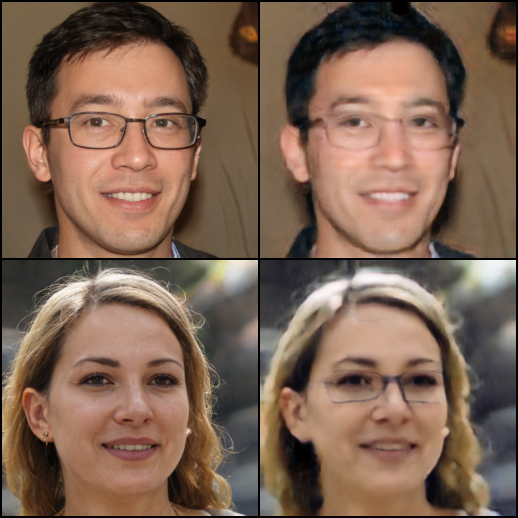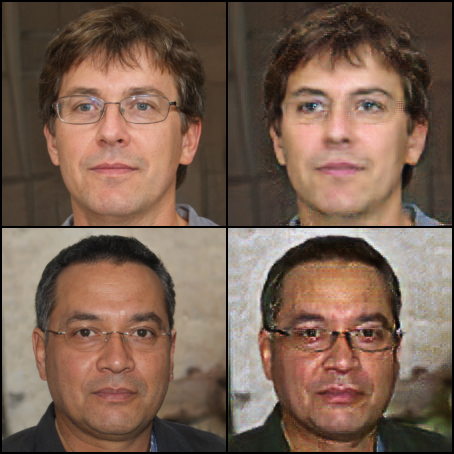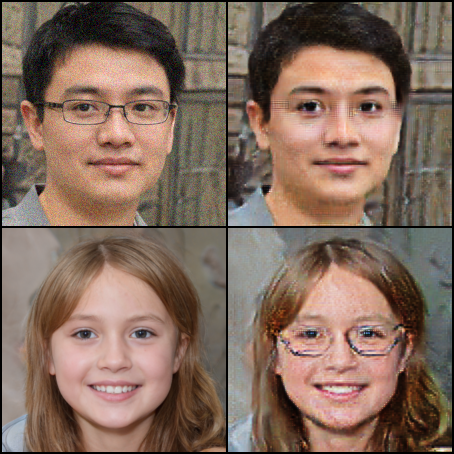CycleGAN for eye glasses removal or addition, implemented in PyTorch
Based on the Kaggle's project Glasses or No Glasses, and a solution.
The task
The dataset contains 2855 faces with glasses, and 1645 without. All face images are 1024x1024 color images, with faces aligned up, but not paired.
The task is to create a model to remove the eye glasses when there is a pair, and add one when there is not.
Dependencies
- PyTorch (developed in 1.11.0)
- torchvision (developed in 0.12.0)
- Pandas (developed in 1.4.2)
About the model
There are 2 CycleGAN models, both modified from a CycleGAN implementation:
model.py: closer to the original version.model2.py: more modifications on top ofmodel.py. Note that this doesn't seem to perform any better thanmodel.py.
In the model.py implementation
The generator has:
- an encoder that down-samples the image by a factor of 2 in each step,
- a few residual blocks,
- a decoder that up-samples to restore original dimension.
The decoder uses upsample + conv instead of transposed convolution to avoid checkerboard artifacts.
The discriminator has:
- a few convolution layers
- sigmoid activation at the end
The CycleGAN model loss function consists of:
- generator loss (MSE)
- discriminator loss (MSE)
- cycle consistency loss (L1)
- identity loss (L1)
Each training iteration trains:
- the discriminator a few times (could be 1, controlled by a hyperparameter).
- the generator, optionally in a progressive manner (freeze all decoder layers, and gradually un-freeze from the beginning to end layers, then repeat again).
- when training the generator, compute the cycle consistency loss with a certain probability (default to 0.9, so 90 % of the time a cycle-loss is computed). Similarly, compute the identity loss with a p=0.1 chance. This has no further reason other than saving some computations (maybe also an unvalidated assumption that identity loss only serves to prevent a degenerate case where the generator pair creates nothing but the color-inverted version of their respective inputs).
In the model2.py implementation
Differences from model.py:
- Tried Switchable normalization to replace instance normalization for the residual blocks and the decoder.
- Add dropout to the generator.
- Use multiple discriminators at different scales. Max-pool the input to 3 scales, and apply the same discriminator module to the 3 scales, then combine the sigmoid activations by concatenation.
- Use RMSprop instead of Adam optimizer.
Results
These are 2 random outputs from model.py, after 10 epochs:
These are 2 random outputs from model2.py, after 10 epochs:
In a word, pretty bad.
If you know how to improve the model please fire an issue. Thanks!



